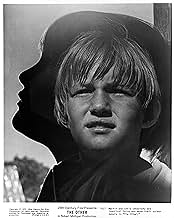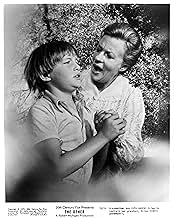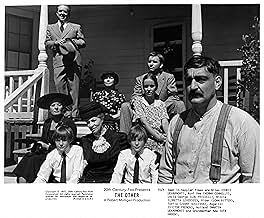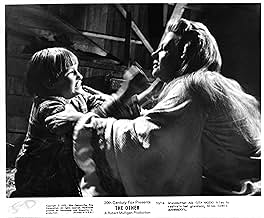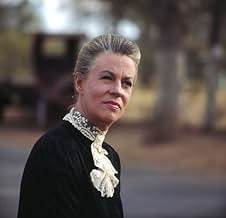IMDb RATING
6.8/10
7.3K
YOUR RATING
A series of gruesome accidents plague a small American farming community in the summer of 1935, encircling two identical twin brothers and their family.A series of gruesome accidents plague a small American farming community in the summer of 1935, encircling two identical twin brothers and their family.A series of gruesome accidents plague a small American farming community in the summer of 1935, encircling two identical twin brothers and their family.
- Awards
- 1 win
Bob Melvin
- Sideshow Man
- (uncredited)
Joanne Riggs
- Chan-yu's Assistant
- (uncredited)
Angelo Rossitto
- Sideshow Performer
- (uncredited)
Carolyn Stellar
- Woman in the Mirror
- (uncredited)
Storyline
Did you know
- TriviaAt the early stages of production, author-producer Tom Tryon wanted Ingrid Bergman for the role of Ada (the Grandmother), and Mark Lester for the dual roles of Niles and Holland. When Bergman passed due to a previous stage commitment, Uta Hagen was hired and brought aboard twins Chris Udvarnoky and Martin Udvarnoky.
- GoofsSet in 1935, Rider makes reference to the movie Murder in the Blue Room (1944).
- Quotes
Ada: Niles, where is the baby?
Niles Perry: Holland's got the baby. He put the pain pills in your tea. He's bad. He'll never go to heaven!
- Alternate versionsWhen shown on Network Television the last shot contained a voiceover, in which the person in the shot said they were going to tell the sheriff the truth about all the bad things which had been going on.
- ConnectionsFeatured in Movie Macabre: The Other (1984)
Featured review
Many horror fans, and those who try to write such stories, understand that Stephen King has taken inspiration from the work of others. And there can be little doubt King was greatly influenced by Thomas Tryon's outstanding novels Harvest Home and The Other.
The TV movie version of The Other enjoyed good-ratings and critical acclaim when it was first broadcast on CBS in 1972. Although Stephen King was actively writing horror at the time, I suspect he took subtle cues from The Other. Among other things, little Danny Torrance's psychic manifestation of "the shining" is curiously similar to a phenomena called "playing the game" in Tryon's story.
Thomas Tryon wrote with an elegant style somewhat reminiscent of H.P. Lovecraft's. His plots were engaging, his characters interesting and well developed, and his New England settings evoked the gloom and obscure anxiety traditionally associated with that region. So why has his work faded into near-obscurity while King's is heralded as the greatest in the history of horror?
Regrettably, Tryon, who was one of the most highly regarded young actors in Hollywood, started writing rather late in life and died while his creative powers were waning. He also chose to explore genres other than the Gothic (with generally good results.) There is also a more staid, pre-World War II air about his work that might not appeal King's core audience. Nevertheless, Tryon's Gothic efforts translated wonderfully onto the small screen, and he deserves a well-deserved place in the pantheon of American Gothic writers.
Thankfully, American Movie Classics has begun airing The Other again, and a new generation of fans now has the opportunity to enjoy this seminal work of cinematic horror.
The TV movie version of The Other enjoyed good-ratings and critical acclaim when it was first broadcast on CBS in 1972. Although Stephen King was actively writing horror at the time, I suspect he took subtle cues from The Other. Among other things, little Danny Torrance's psychic manifestation of "the shining" is curiously similar to a phenomena called "playing the game" in Tryon's story.
Thomas Tryon wrote with an elegant style somewhat reminiscent of H.P. Lovecraft's. His plots were engaging, his characters interesting and well developed, and his New England settings evoked the gloom and obscure anxiety traditionally associated with that region. So why has his work faded into near-obscurity while King's is heralded as the greatest in the history of horror?
Regrettably, Tryon, who was one of the most highly regarded young actors in Hollywood, started writing rather late in life and died while his creative powers were waning. He also chose to explore genres other than the Gothic (with generally good results.) There is also a more staid, pre-World War II air about his work that might not appeal King's core audience. Nevertheless, Tryon's Gothic efforts translated wonderfully onto the small screen, and he deserves a well-deserved place in the pantheon of American Gothic writers.
Thankfully, American Movie Classics has begun airing The Other again, and a new generation of fans now has the opportunity to enjoy this seminal work of cinematic horror.
- How long is The Other?Powered by Alexa
Details
Box office
- Gross US & Canada
- $475,611
- Runtime1 hour 48 minutes
- Color
- Aspect ratio
- 1.85 : 1
Contribute to this page
Suggest an edit or add missing content



